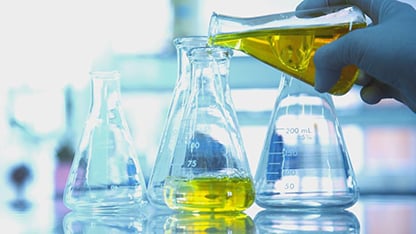For Petroleum UVCBs (Unknown or Variable composition, Complex reaction products, or Biological materials), REACH testing involves specific considerations due to their complex and variable nature.

Since petroleum UVCBs were first produced from crude oil, their compositions are usually highly complicated and varied. Concawe, the European oil industry's organisation for Environment, Health, and Safety in refining and distribution, established recommendations for the analytical testing necessary for different product streams to help with the characterisation of these compounds for REACH registration.
Substance Identification
Due to the complex nature of petroleum UVCBs, detailed chemical characterisation is required. This involves identifying the individual components of the mixture as far as possible. Information about the source (e.g., crude oil origin) and production process is crucial. The exact composition can vary significantly depending on these factors.
UVCBs can be grouped with other substances of similar properties to reduce the number of tests needed. This approach relies on the assumption that similar substances will have similar properties and hazards. Data from one substance can be used to predict the properties of another, related substance. This is particularly useful for petroleum UVCBs, where testing every single component is impractical.
Intertek experts at our West Thurrock site will conduct petrochemical substance identification testing for Reach purposes. This utilises a variety of techniques to characterise the substance, including complex hydrocarbon composition by GCxGC and Mass Spectrometry.
Variability in UVCBs
The inherent variability in UVCBs poses a challenge for standard testing methods. Regulators provide some flexibility in testing requirements to account for this variability. Use of alternative testing strategies like in vitro tests, QSAR (Quantitative Structure-Activity Relationship) models, and other testing methods are encouraged to reduce the need for extensive testing. Spectroscopic methods such as UV (ultraviolet), IR (infrared), and NMR (nuclear magnetic resonance) used to fingerprint substances are not sufficient to characterise petroleum UVCB substances due to their complexity, and additional analytical information is required, which is usually the recommended method. These generally include a boiling point and carbon number distribution plus information and individual hydrocarbons or classes of hydrocarbon.
Petroleum UVCBs Characterisation
Concawe recommends methods that include boiling point and carbon number distribution, as well as individual hydrocarbon analysis, to provide a comprehensive profile of these substances. Additional in-depth characterisation techniques are necessary when required by ECHA, especially for complex streams such as lubricant base oils, heavy fuel oils, and bitumen. Our Intertek scientists are experienced in overcoming the analytical challenges that arise from the need to differentiate and quantify the vast number of components and routinely apply sophisticated methods like viscosity determination and IP346 dimethyl sulfoxide extraction to determine specific properties such as the polycyclic aromatics (PCA) content.
We have been supporting global petrochemical companies for over 10 years, providing advanced characterisation testing services to enable their successful REACH registration. Additionally, our specialist team supports all the oil majors individually, but also via the Concawe consortium, who have published several of our reports, recognising the robust nature of our testing capabilities.


